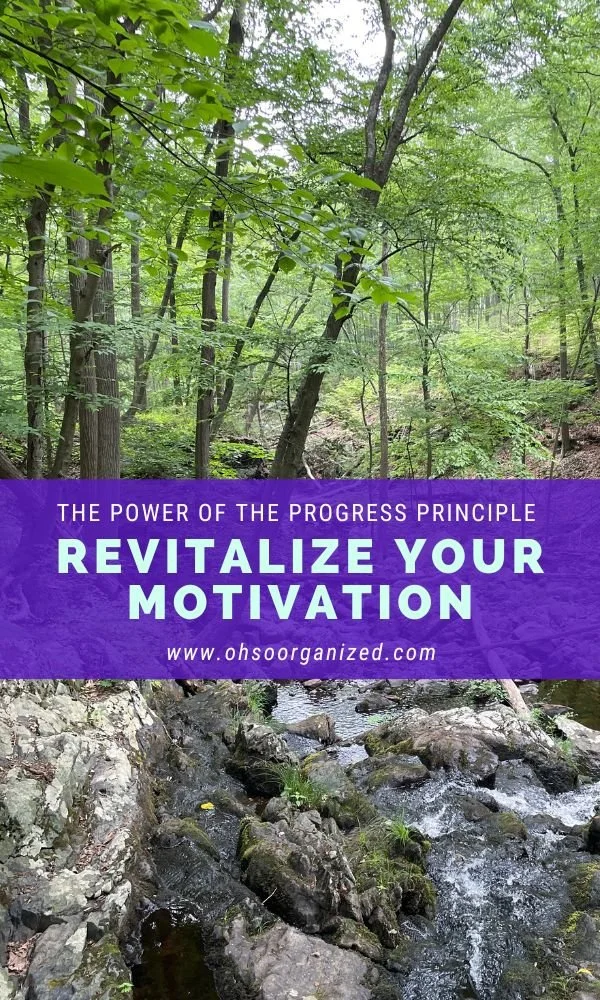There will always be tasks to do, projects to complete, and calls, texts, or emails to return. These can be motivation drivers. However, they can also derail and de-motivate. You can burn out when you’re constantly doing and striving without breaks or spaciousness.
Do you feel overwhelmed by your to-do lists, incomplete projects, and things you ‘should’ be doing?
I’ve been there, as have many of my clients, family, and friends. Surprisingly, one antidote to doing too much is to slow down. This may seem counter-intuitive and a strange way to boost motivation. However, it’s not just about taking a break from your list.
Make time to savor life and engage in restorative activities that replenish your energy.
Savoring Life
What works will be different for each person. For me, savoring and slowing down include:
Getting enough sleep
Meditating
Refusing to rush
Going away and changing my environment
Practicing yoga
Spending time with family and friends
Having alone time
Journaling
Showering
Being on or near water
Getting a massage or pedicure
Eating juicy summer fruit
Slowing sipping an iced coffee or tea
Sitting in the sun
Exploring new places
Leaning into and being present in the moment
A Japanese Concept
Do you know about yutori? According to DailyOM™, yutori is “a Japanese concept of spaciousness. It refers to slowing down to simply breathe, and savor life – intentionally creating space to relax and reflect without being under constant pressure.”
How would integrating yutori into your life benefit you?
Motivation Cycles
I’m a doer and a completer. I love setting goals and accomplishing them. The first six months of this year were especially active. And guess what? I needed a break from that intensity, which I knew the summer would bring. My pace is slower even though I’m still actively working with organizing clients and on several projects.
This summer, I intentionally created more space for restorative, nourishing activities in addition to work. My latest motivation-restoring adventures include going to the beach, exploring new museums, listening to live music, and eating a delicious treat.
“Make time to savor life and engage in restorative activities that replenish your energy.”
4 Ways to Restore Motivation
1. Being by the Sea
Waves in. Waves out. The sound of the ocean waves moving forward and backward along the sandy shore is soothing. The sun warms my skin as slight breezes and cool water prevent me from overheating. By the sea, there is no agenda, no lists to take care of. Time stretches as I wiggle my toes in the sand.
2. Exploring New and Old Places
My husband and I visited the Queens Museum and Flushing Meadow Corona Park this weekend.
The Queens Museum is located on the Flushing Meadow Corona Park grounds, where the 1939 and 1964 World's Fairs were held. I was there 60 years ago for the World’s Fair and have spotty yet happy memories of going with my family.
Steve and I walked the grounds, marveled at the 700,000-pound stainless steel Unisphere, talked about our childhood World’s Fair memories, and were wowed by the Panorama, a scaled cityscape model of the five New York City boroughs.
The exploration didn’t end there. We ventured on to another area of Queens.
3. Learning and Listening
Our next stop was the Louis Armstrong House Museum. We had a wonderful tour of his house, explored the museum, and, in Armstrong’s garden, heard a fantastic jazz quartet with Jon-Erik Kellso playing the trumpet.
It reminded me how much I love hearing live music. I grew up in a house full of musicians. People were always playing, practicing, learning, teaching, composing, jamming, and performing. Watching and listening to musicians share their gifts is so joyful. I had a positive, visceral response to being outside and hearing live music.
Louis Armstrong lived his life with passion, purpose, and generosity. It was moving and inspiring to be in his space, hear stories about his life, and listen to musicians embodying this rich tradition of jazz music.
4. Eating a Delicious Treat
The exploratory day was completed by dinner at a fantastic local Italian restaurant in Queens. However, before dinner, we ate dessert. It’s fun to shake things up sometimes.
Steve brought me to the famous Lemon Ice King of Corona to get ices. I was so excited! What’s not to love about a cold, refreshing dessert? The hardest part was choosing which flavor to get. They have over 50 options, although lemon ice is their most popular. They don’t mix flavors but will let you try one before you decide.
I ended up choosing cantaloupe ice, which was amazing! Steve got chocolate, which was also delicious. After dinner, we almost returned for seconds but were too full. We’ll return another time.
Motivation needs to be cultivated. Slowing down, savoring life, having new experiences, and giving yourself a break from life’s pressures is a great way to do that. What helps you restore your motivation?
If you need help restoring motivation and getting organized, email me at linda@ohsorganized.com, call 914-271-5673, or schedule a Discovery Call. Reaching your goals is possible, especially with support.














